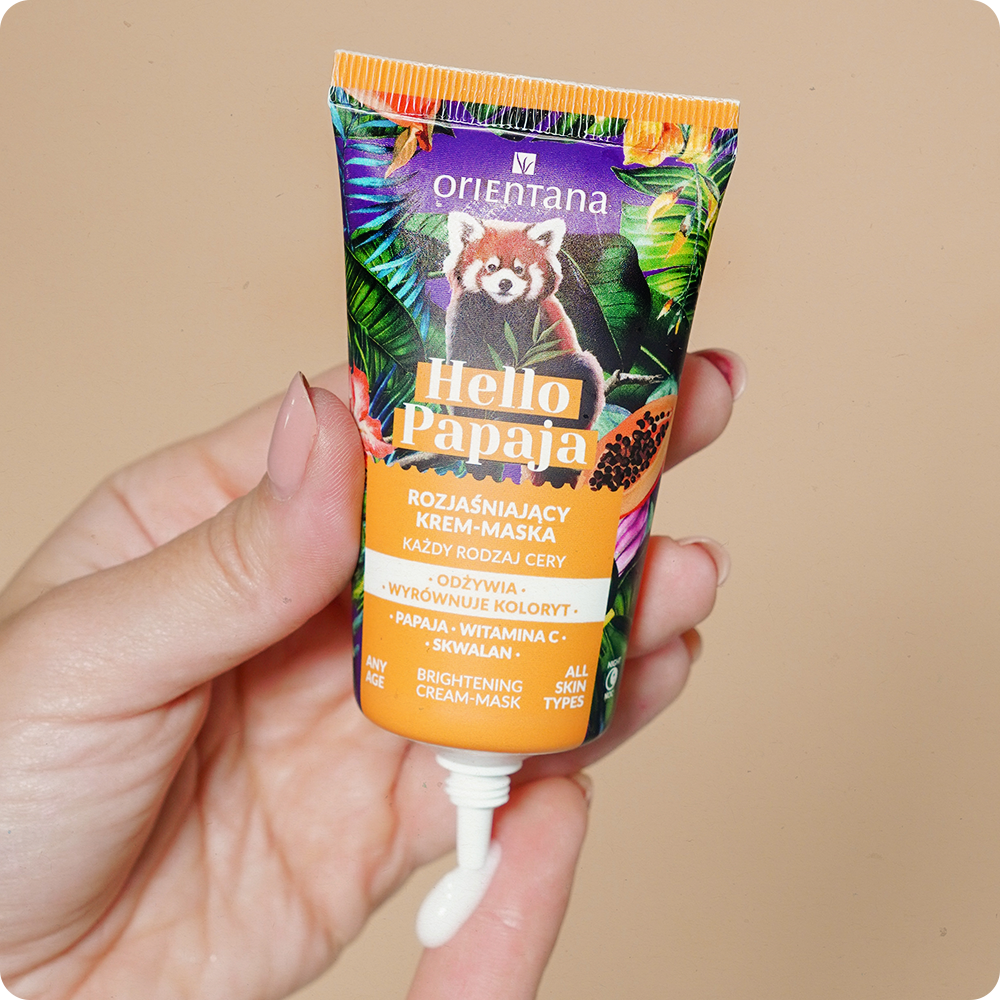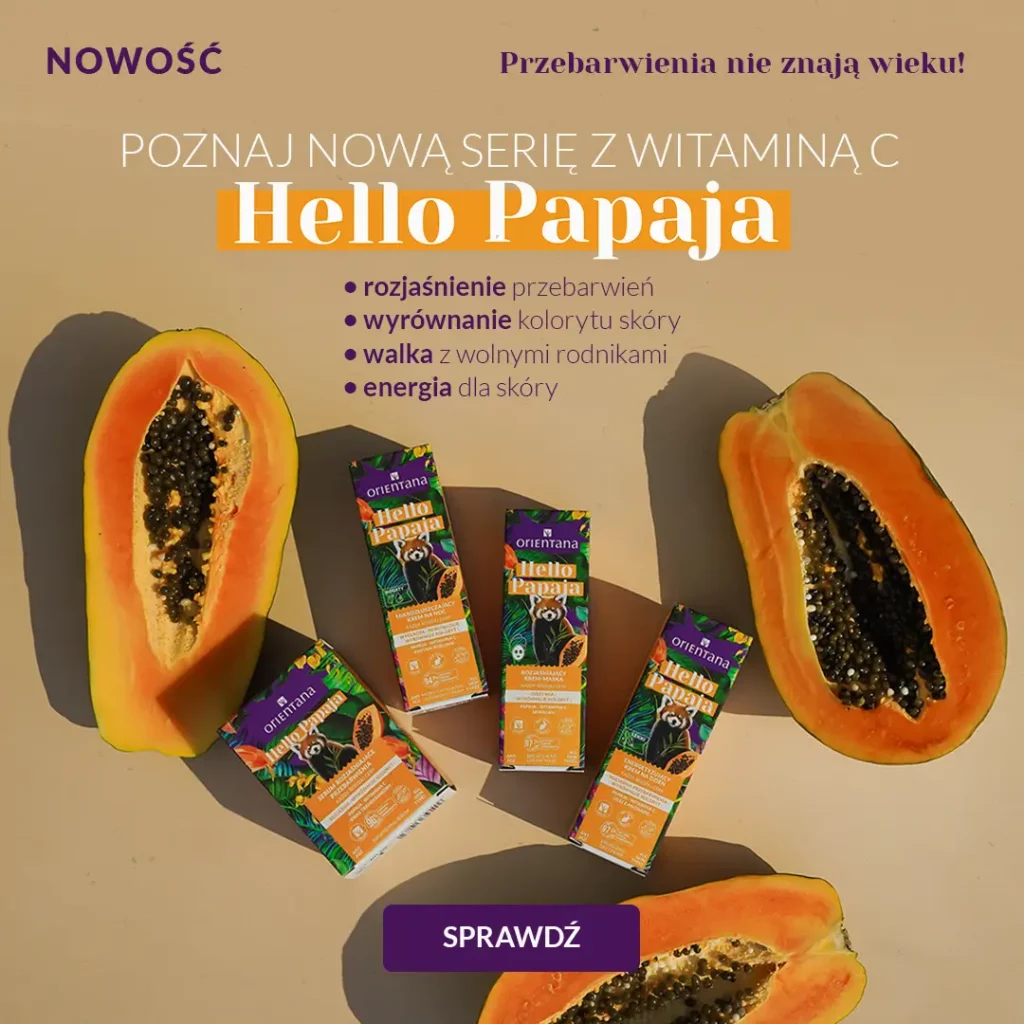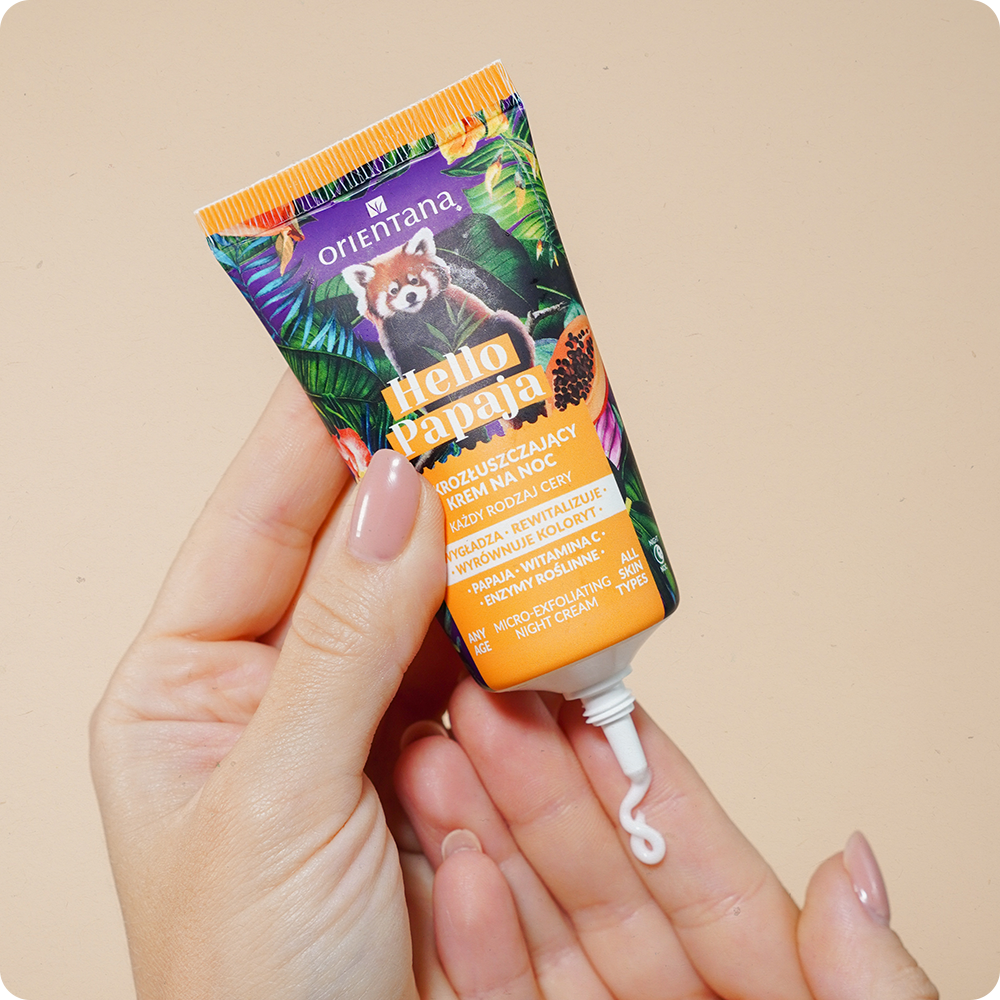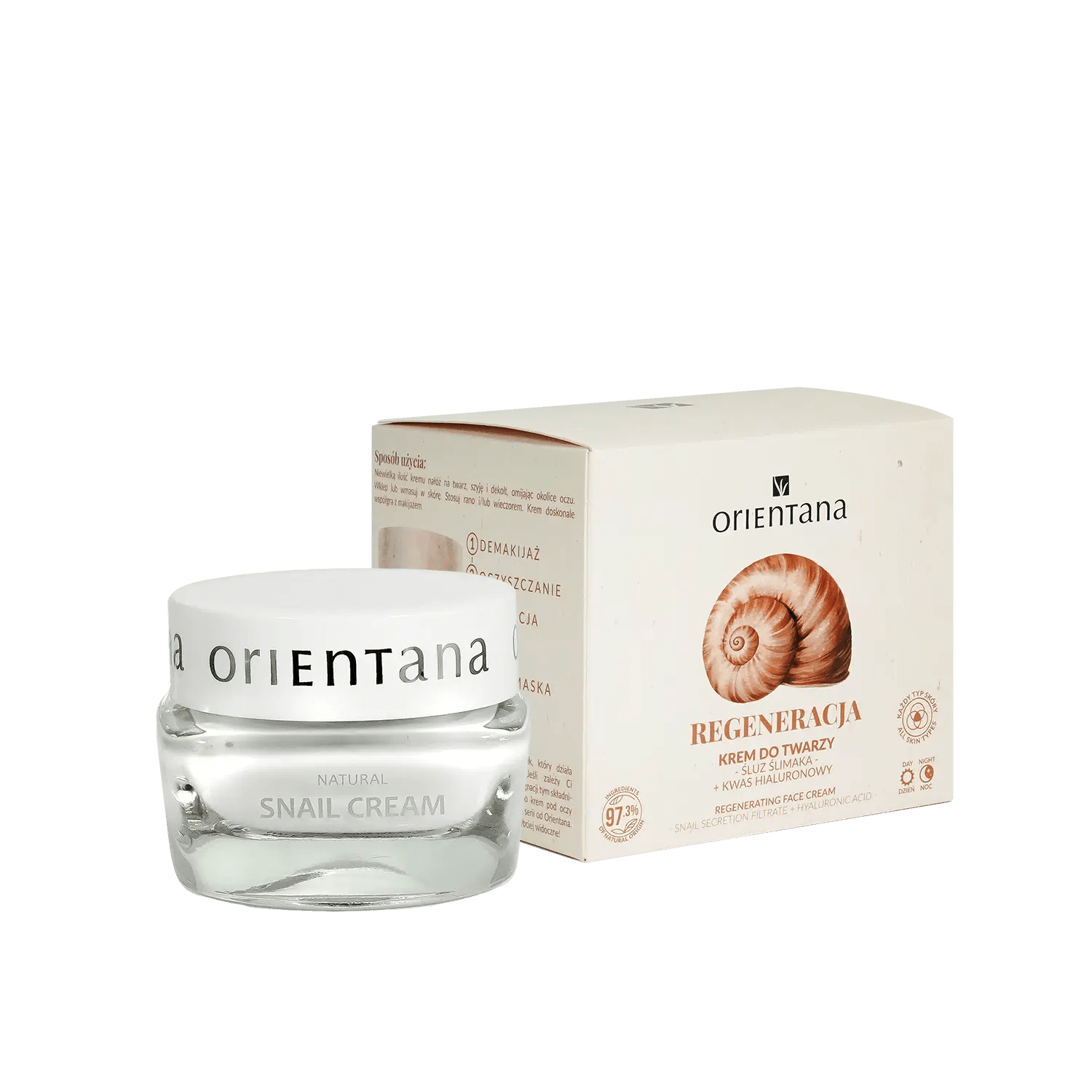How is the red panda connected to the Orientana brand? Orientana is a brand of natural cosmetics with extracts from Asian plants. It was created out of a fascination with the nature of Asia. In addition to producing natural cosmetics that care for the body and senses, we also have an educational mission. We want to tell you what species of animals may soon become extinct and how you can help.
We decided that our natural cosmetics series called Hello would of course be vegan and not tested on animals, but would also take care of Asian animals threatened with extinction. On the packaging of the cosmetics we placed a drawing of an endangered Asian animal, and the next step was financial support related to real help for this species. In the case of the Hello Papaya series, it is a red panda.
What does a red panda look like?
The red panda (Ailurus fulgens), also known as the "red panda" or "little panda," is an adorable mammal that inhabits the mountainous forests of Asia, primarily in Nepal, China, Burma, Bhutan, and northeastern India. Although often associated with its popular black-and-white cousin, the giant panda, the red panda is an entirely separate species that belongs to its own family, Ailuridae.
Red pandas are relatively small: their body length is around 50–60 cm, and their fluffy tail can be up to 50 cm long. Agile and excellent climbers, red pandas have thick, rusty-brown fur that protects them from the cold of the mountain forests. The tail not only serves as a barrier against the cold, but also helps maintain balance when climbing. Thanks to its appearance and behavior, the red panda has gained popularity as one of the most adorable and friendly species in the world.
How many pandas are there in the world? There are fewer than 10,000 of them.
The population of the red panda (Ailurus fulgens) has declined significantly since the 1980s. In 1980, the number of these animals was estimated at around 20,000–25,000 individuals in the wild. There are now 10,000 and this number is decreasing. The red panda inhabits highland forests, often at altitudes between 2,200 and 4,800 meters above sea level. It chooses places with dense vegetation, full of bamboo – the main element of its diet. In addition to bamboo, the red panda also eats fruits, berries, leaves and, occasionally, insects and small vertebrates. It leads a solitary life, is active mainly at dusk and dawn.
Unfortunately, the red panda is currently listed as an endangered species (category “Vulnerable” according to the International Union for Conservation of Nature, IUCN). One of the biggest threats to these animals is deforestation, which leads to the loss of their natural habitat. Another problem is poaching – red panda fur is sought on the black market, and the animals are also illegally captured for illegal trade. In addition, there is habitat fragmentation, climate change, and diseases transmitted through contact with humans and pets.
How can we help and what did Orientana do?
Orientana contacted the most well-known and trusted organization, Red Panda Network (RPN). It is a non-profit organization founded in 2007 that is dedicated to the protection of the red panda and its natural habitat. Their mission is to protect the panda from extinction through conservation activities and monitoring of the panda habitat, but also in terms of education and involvement of local communities
Since its establishment, the Red Panda Network has implemented numerous projects in Nepal, where the red panda is most abundant, although it is seriously endangered. The organization works with local communities to educate and engage them in activities to protect this extremely valuable species. The Red Panda Network is a habitat protection organization, working with local authorities and landowners to protect forest areas and prevent their logging. The RPN regularly conducts population surveys of the red panda in Nepal, which allows for a better understanding of the numbers and health of these animals. The organization conducts educational programs in Nepalese schools and villages, which aim to raise awareness of the importance of nature conservation and the impact of their actions on the life of the red panda. The Red Panda Network engages local residents by creating training programs for the so-called "Forest Guardians" - field guards who monitor red panda habitats, record signs of poachers' presence and inform about possible threats.

Red panda and palm oil – a tragic combination!
Do the cosmetics you buy contain palm oil? Please check. Orientana does not use this ingredient in its cosmetics, but believe me, large international cosmetic brands do and even have factories of this oil in Asia.
Palm oil is the most commonly used oil in the world. It is found in many everyday products, a key raw material for the food market, and an ingredient in cosmetics such as soap or toothpaste. The growing demand for palm oil poses a threat to the natural environment. Valuable natural areas in Southeast Asia are being destroyed for new plantations.
The destruction of tropical forests for palm oil plantations leads to a loss of biodiversity and threatens many animal species, such as the orangutan, the Sumatran elephant and the red panda.
Jungle forests are being burned to make room for industrial palm oil plantations. Most often, this is the result of illegal arson. Additionally, when forests are burned, greenhouse gas emissions increase many times over, which significantly contributes to climate change. Red pandas are dying, and if some survive, they no longer have their habitats and food. Around the world, conservation organizations are looking for solutions to the problem of deforestation for palm oil plantations.
Our red panda Pinju on the Hello Papaja series packaging.
In September 2024, the month of the Hello Papaya series premiere, we adopted a panda named Pinju. Pinju lives in the red panda conservation area called Panchthar-Ilam-Singhalila, located in eastern Nepal. He is a young male. He eats bamboo and also likes mountain ash berries from mountain ash trees. He is a bouncy mammal, likes to roam in the branches of trees. He is often spotted by the river.

You can find a drawing of a red panda in the vitamin C series - HELLO PAPAJA:
- Hello Papaja Vitamin C Serum Brightening Discolorations 30 ml
- Energizing Day Cream with Vitamin C Hello Papaya 40 ml
- Hello Papaya Micro-Exfoliating Night Cream with Vitamin C 40 ml
- Brightening cream-mask with vitamin C HELLO PAPAJA 40 ml
We want to talk about it and we want you to know from us that this beautiful animal, which we often see in cute illustrations or as a mascot, is actually being destroyed by humans.
You might not like a post on TikTok, IG, or Facebook about a cute panda happily eating a banana in someone's home. This is usually an animal that has been kidnapped from the jungle, smuggled, and sold. It lives in captivity.
Perhaps when you are in Asia you will protest when someone mentions the hunting of red pandas. Maybe you will give up visiting a red panda "sanctuary" which offers contact with the animal as an attraction for tourists, suggesting to feed and pet it. In reality these animals are held in captivity and people benefit from it.
You may want to stop supporting brands that are listed on ethicalconsumer.org’s August 2023 list as using a lot of palm oil, some with factories in Asia. The list includes Dove, L’Oreal, Bahlsen, L’Occitane, Head and Shoulders, Pampers, Always, Clarins, Bull Dog, Nestlé, Aesop, Caffè Nero, Domino’s Pizza, Colgate-Palmolive, Max Factor, Wella. The full list here
RED PANDA NETWORK - ACTIVITIES
Forest Guardians Program
One of the most important RPN programs is the Forest Guardians initiative. This project trains local residents to become wildlife rangers who monitor red panda habitats. The rangers are able to respond quickly to threats such as illegal logging, as well as report any signs of poaching.
The Forest Rangers play a key role in protecting the red panda habitat. This not only allows for strengthening nature conservation, but also for engaging local residents in environmental activities. The Rangers also support scientific research – they collect data on the red panda population, which is used by researchers to assess the effectiveness of conservation activities.

Educational Activities – Building Awareness
Red Panda Network places great emphasis on environmental education. Working in local communities, the organization teaches children and adults about the importance of protecting the red panda and its environment. Through workshops, lectures and educational programs, RPN builds environmental awareness, which influences changes in behavior and attitudes towards nature.
Cooperation with government and international organizations
Red Panda Network also works with the Nepalese government and international conservation organizations such as the World Wildlife Fund (WWF) and the International Union for Conservation of Nature (IUCN). Through these collaborations, the organization can scale its operations and influence environmental policy.
In 2018, the Nepalese government officially declared “National Red Panda Conservation Day,” which is a great achievement for the Nepalese National Red Panda Conservation Day and the result of many years of educational efforts. Thanks to this initiative, the protection of the red panda has become a higher priority for the authorities and the wider local community.
RED PANDA - Challenges and Future of Conservation
Despite the increased work to save the red panda, we still face many challenges. Climate change is affecting the weather in the region, which is leading to reduced food availability and changing the habitat of the red panda. Increasing population and infrastructure development are also increasing pressure on ecosystems. There is still the problem of palm oil and displacement of pandas, and the problem of poaching and trade. Therefore, we must be aware that this also depends on us.






